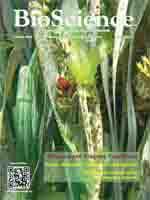Over half of the world's human population lives in cities, and for many, urban greenspaces are the only places where they encounter biodiversity. This is of particular concern because there is growing evidence that human well-being is enhanced by exposure to nature. However, the specific qualities of greenspaces that offer the greatest benefits remain poorly understood. One possibility is that humans respond positively to increased levels of biodiversity. Here, we demonstrate the lack of a consistent relationship between actual plant, butterfly, and bird species richness and the psychological well-being of urban greenspace visitors. Instead, well-being shows a positive relationship with the richness that the greenspace users perceived to be present. One plausible explanation for this discrepancy, which we investigate, is that people generally have poor biodiversity-identification skills. The apparent importance of perceived species richness and the mismatch between reality and perception pose a serious challenge for aligning conservation and human well-being agendas.
How to translate text using browser tools
1 January 2012
Biodiversity and the Feel-Good Factor: Understanding Associations between Self-Reported Human Well-Being and Species Richness
Martin Dallimer,
Katherine N. Irvine,
Andrew M. J. Skinner,
Zoe G. Davies,
James R. Rouquette,
Lorraine L. Maltby,
Philip H. Warren,
Paul R. Armsworth,
Kevin J. Gaston
ACCESS THE FULL ARTICLE
It is not available for individual sale.
This article is only available to subscribers.
It is not available for individual sale.
It is not available for individual sale.

BioScience
Vol. 62 • No. 1
January 2012
Vol. 62 • No. 1
January 2012
ecosystem services
human—wildlife interactions
psychological well-being
urban ecology
urban greenspace




